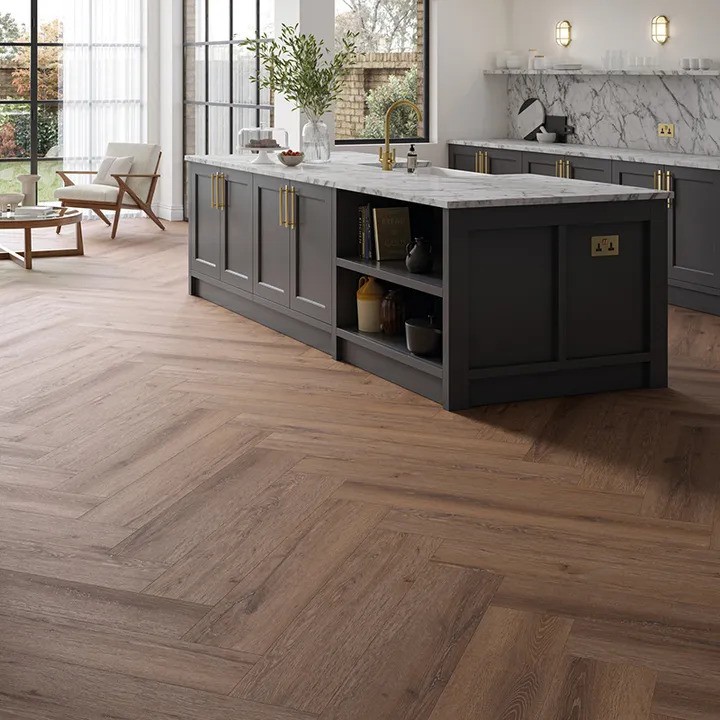
Introduction
Luxury Vinyl Tile (LVT) flooring has become increasingly popular in recent years due to its durability, affordability, and aesthetic appeal. However, as more homeowners and businesses consider this flooring option, it is essential to understand the environmental impact of LVT flooring. Kudos Interior Designs provides insights into the benefits and potential environmental concerns of LVT flooring, offering a balanced view for those considering it for their homes or offices.
What is LVT Flooring?
LVT flooring is a type of vinyl flooring that mimics the look of natural materials such as wood or stone. It is made from several layers, including a tough top layer that resists scratches and dents, making it a practical choice for high-traffic areas. The realistic designs and patterns are printed on the decorative layer, giving LVT its appealing look.
Benefits of LVT Flooring
- Durability: LVT flooring is known for its long lifespan and ability to withstand heavy use, reducing the need for frequent replacements.
- Water Resistance: Unlike hardwood, LVT is water-resistant, making it ideal for kitchens, bathrooms, and basements.
- Ease of Maintenance: LVT flooring is easy to clean and maintain, requiring only regular sweeping and occasional mopping.
- Cost-Effective: Compared to natural materials like hardwood or stone, LVT is more affordable, offering a high-end look without the high-end price.
Environmental Impact of LVT Flooring
While LVT flooring offers many practical benefits, it is essential to consider its environmental impact.
- Production Process: The production of LVT involves the use of PVC (polyvinyl chloride), a plastic that can release harmful chemicals during manufacturing. Kudos Interior Designs highlights that many manufacturers are now using more sustainable practices and recycled materials to reduce environmental harm.
- Recyclability: Traditional LVT flooring can be challenging to recycle due to the mix of materials. However, advancements in recycling technologies are making it easier to recycle old LVT flooring, reducing waste in landfills.
- Indoor Air Quality: High-quality LVT flooring emits low levels of volatile organic compounds (VOCs), which can improve indoor air quality. It’s crucial to choose LVT products certified for low emissions.
- Longevity: The durability of LVT means it needs to be replaced less frequently than other types of flooring, which can help reduce its overall environmental impact.
Sustainable Choices in LVT Flooring
To minimize the environmental impact of LVT flooring, consider the following tips from Kudos Interior Designs:
- Choose Reputable Brands: Opt for brands that prioritize sustainability and transparency in their manufacturing processes.
- Look for Certifications: Certifications like FloorScore and GREENGUARD indicate that the LVT flooring meets strict environmental and health standards.
- Recycled Content: Some LVT flooring options include recycled materials, reducing the demand for new raw materials and decreasing overall environmental impact.
- Proper Disposal: When it’s time to replace your LVT flooring, research recycling programs that accept vinyl flooring to ensure it is disposed of responsibly.
Conclusion
LVT flooring offers a durable, attractive, and cost-effective flooring solution, but it is crucial to consider its environmental impact. By choosing sustainable options and supporting manufacturers that prioritize eco-friendly practices, homeowners and businesses can enjoy the benefits of LVT flooring while minimizing their environmental footprint. Kudos Interior Designs is dedicated to providing information and guidance to help you make the best choices for your flooring needs.





